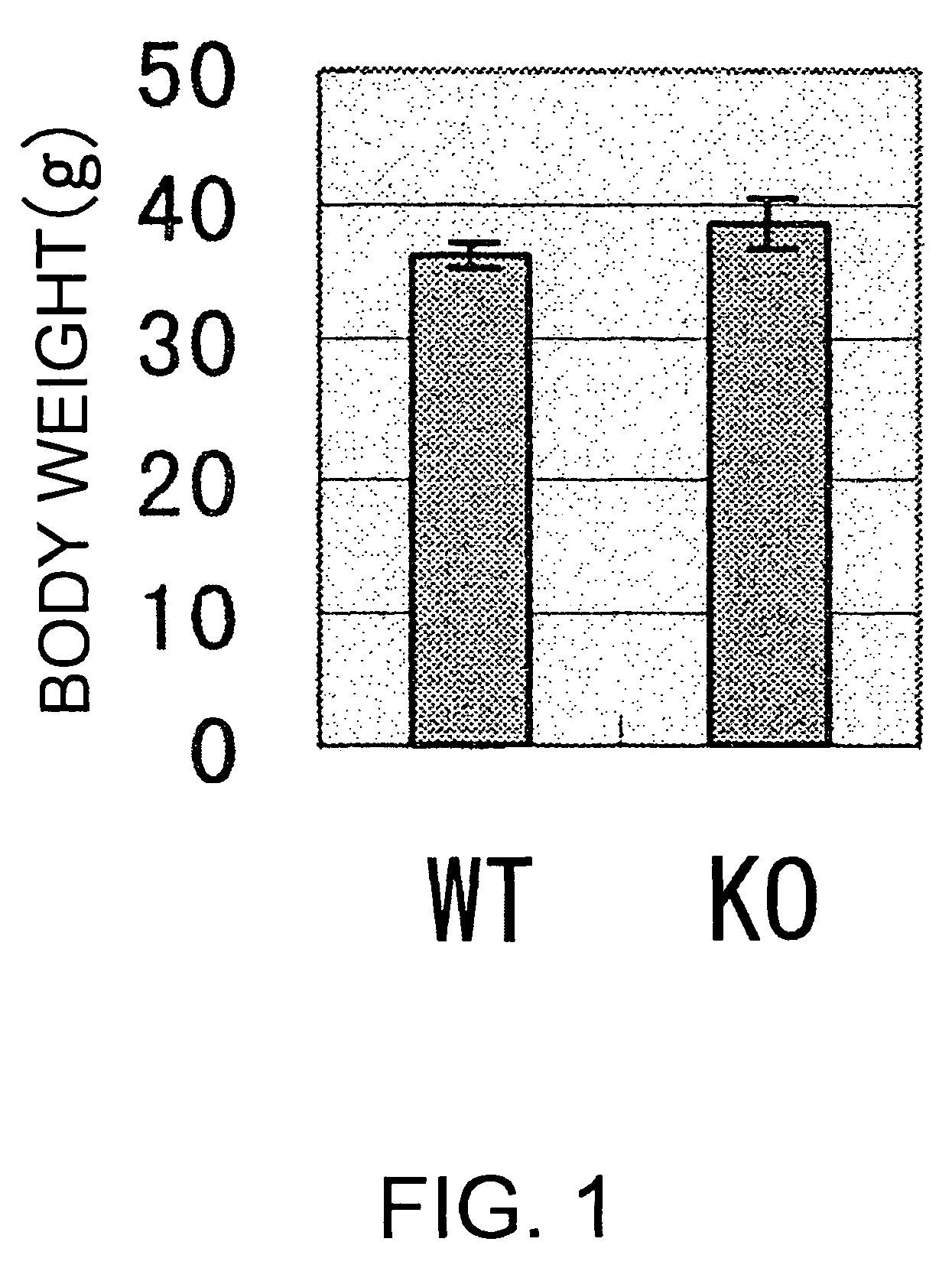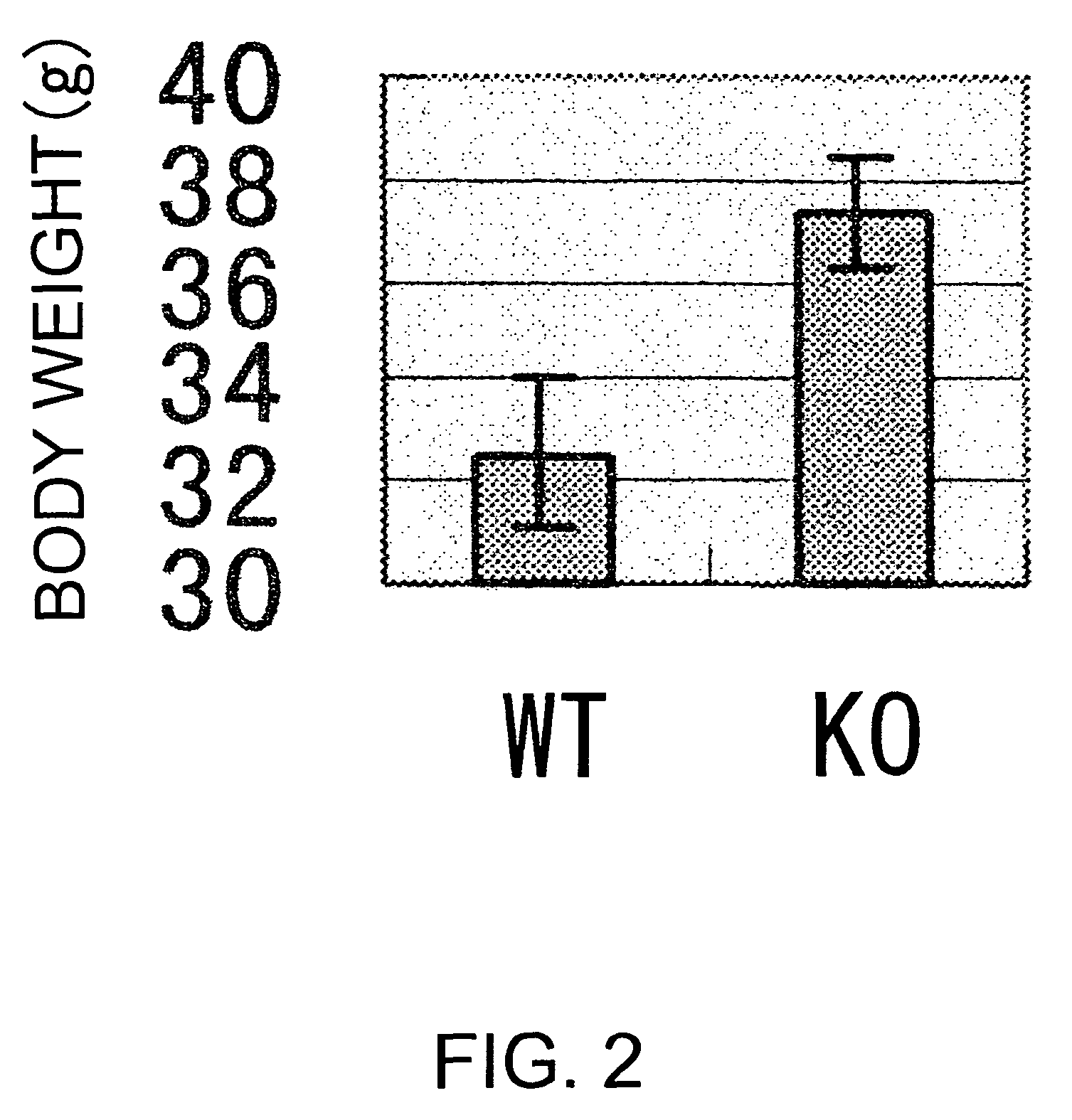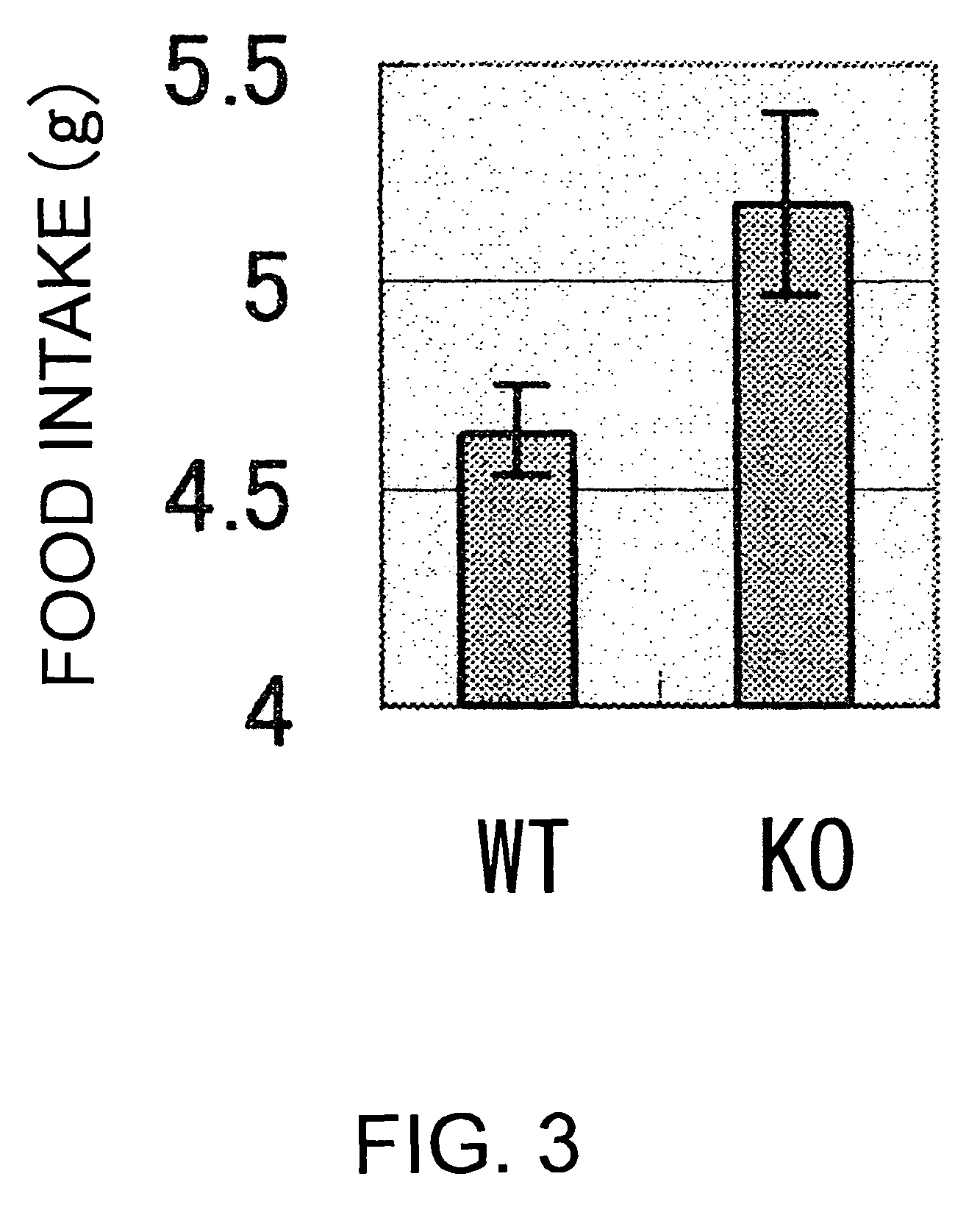Utilization of histamine receptor h3 gene participating in body weight or food intake control
a technology of histamine receptor and h3 gene, which is applied in the direction of drug composition, peptides, metabolic disorders, etc., can solve the problems of difficult application of studies using agonists and antagonists, inflammation and pain, and achieve the effect of reducing hybridization efficiency and reducing hybridization efficiency
- Summary
- Abstract
- Description
- Claims
- Application Information
AI Technical Summary
Benefits of technology
Problems solved by technology
Method used
Image
Examples
example 1
Production of Histamine Receptor H3 Gene-Modified Mice and Analysis of These Genetically Modified Mice
(1) Construction of a Vector for Homologous Recombination of Mouse Histamine Receptor H3 Gene.
[0184]Mouse histamine receptor H3 genomic clones were obtained by screening a mouse 129 / Sv genomic library (Stratagene) using a rat histamine receptor H3 cDNA (Lovenberg T. W. et al., Journal of Pharmacology and Experimental Therapeutics, 293: 771-778, 2000) as a probe. The total 16760-bp nucleotide sequence of one of the clones was determined using shotgun cloning methods. This nucleotide sequence is shown in SEQ ID NO: 1.
[0185]The mouse histamine receptor H3 gene comprises three exons. A vector for homologous recombination was constructed by replacing exon 1 of these exons with a PGKneo cassette. That is, Xba I-XbaI (1.9 kb), and Sma I-Xba I (6.0 kb) fragments were placed upstream and downstream of the PGKneo cassette. Exon 1 includes a part of the transmembrane domain 2.
(2) Establishment...
example 2
Production of Second and Later Generations of Histamine Receptor H3 Gene-Modified Mice by Backcrossing, and Analysis of These Genetically Modified Mice
[0189]As a consequence of the production process, genetically modified mice are produced as hybrids between the 129 line and C57BL / 6 line. Therefore, important biological parameters including body weight, and behavioristic parameters cannot be examined in certain cases. In order to remove such this genetic background, which was generated in the production process of the genetically modified mice, the present inventors produced second and later generations of genetically modified mice by the method of backcrossing.
[0190]Backcrossing was performed by crossing genetically modified heterozygous male mice older than ten weeks with C57BL / 6N females. From the next day after mating, the C57BL / 6N females were checked for plugs. As soon as a plug was confirmed, the genetically modified heterozygous male mouse was crossed with a different C57BL / ...
PUM
| Property | Measurement | Unit |
|---|---|---|
| Level | aaaaa | aaaaa |
| Body weight | aaaaa | aaaaa |
| Recombination enthalpy | aaaaa | aaaaa |
Abstract
Description
Claims
Application Information
 Login to View More
Login to View More - R&D
- Intellectual Property
- Life Sciences
- Materials
- Tech Scout
- Unparalleled Data Quality
- Higher Quality Content
- 60% Fewer Hallucinations
Browse by: Latest US Patents, China's latest patents, Technical Efficacy Thesaurus, Application Domain, Technology Topic, Popular Technical Reports.
© 2025 PatSnap. All rights reserved.Legal|Privacy policy|Modern Slavery Act Transparency Statement|Sitemap|About US| Contact US: help@patsnap.com



